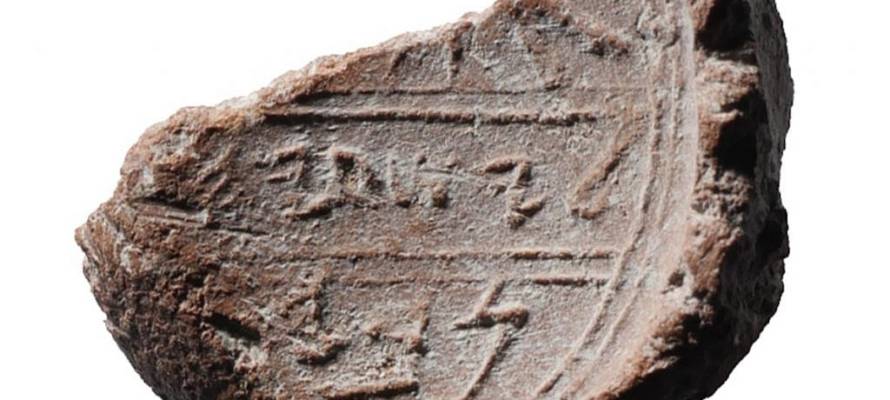“We appear to have discovered a seal impression which may have belonged to the prophet Isaiah,” prominent Israeli archaeologist Dr. Eilat Mazar announced.
By: Beth Stern
Dr. Eilat Mazar of the Hebrew University’s Institute of Archaeology announced in a press release this week that her team has made an outstanding discovery in an area surrounding the Temple Mount in Jerusalem. “We appear to have discovered a seal impression which may have belonged to the prophet Isaiah,” she said.
Mazar published an article on the discovery that will appear in the upcoming March-June issue of the Biblical Archaeology Review (BAR), in which she describes the partially broken clay piece as showing the entire word “LeYeshayah” (To Isaiah) in the middle, and a mostly intact word, “nvy,” on the bottom. This could very well be the Hebrew word for “prophet,” (navi) albeit missing an ‘aleph’ – the last letter.
Mazar was careful to note that since that part of the seal was damaged, and it was impossible to know for certain what the next letter was. However, as she wrote in the article, “Whether or not the bulla we found in the Ophel excavations is the bulla of the prophet Isaiah, it remains, nevertheless, a unique and fantastic discovery.”
The building in which the discovery was made is believed to have been constructed in the time of King Solomon (the second half of the 10th century BCE). It served as part of the fortifications of the Ophel — a governmental quarter built in the area connecting the City of David with the Temple Mount. This area has been the subject of numerous archaeological excavations over the past 30 years, directed Mazar, a third-generation archaeologist.
What makes the find so intriguing is that it was found along with almost two dozen others just a few meters away from where, in 2015, Mazar’s team found a completely intact bulla with the inscription “of King Hezekiah of Judah.” If the newly found seal truly did belong to Isaiah, this would make makes perfect sense, as the Bible details the close relationship Isaiah had with 12th king of the Kingdom of Judah, who ruled circa 727 BCE-698 BCE.
Mazar noted that the discovery of the bulla bearing the name of Hezekiah was “the first time that a seal impression of an Israelite or Judean king has ever come to light in a scientific archaeological excavation on site, rather than as an individual piece on sale in an antiques market.

